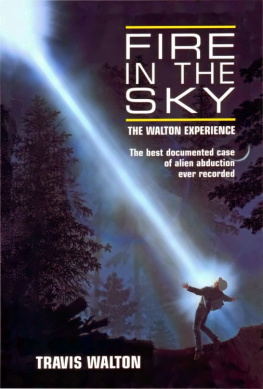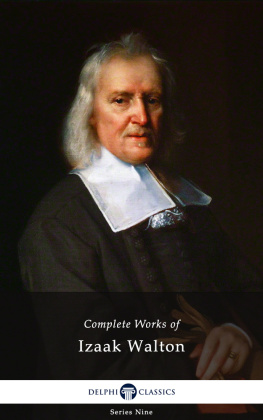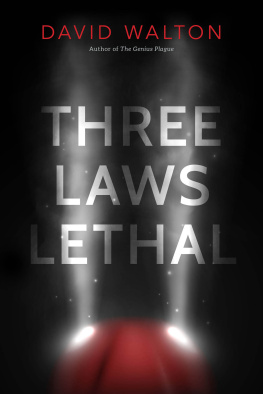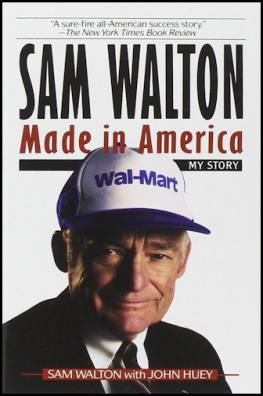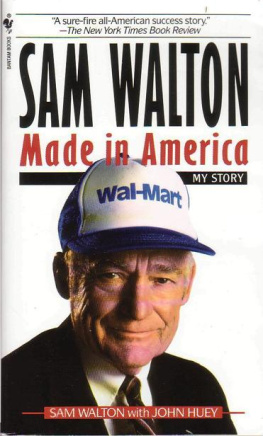"It was many years ago that I got out of a crew truck in the national forest and ran toward a large glowing object hovering in the darkening Arizona sky. But when I made that fateful choice to leave the truck, I was leaving behind more than just my six fellow workmen. I was leaving behind forever all semblance of a normal life, running headlong toward an experience so overwhelmingly mind-rending in its effects, so devastating in its aftermath, that my life would nevercould neverbe the same again.
Travis Walton
On November 5, 1975 a group of loggers in the mountains of northeastern Arizona observed a strange, unusually bright light in the sky. One of those men, Travis Walton, recklessly left the safety of their truck to take a closer look. Suddenly, as he walked toward the light, Walton was blasted back by a bolt of mysterious energy.
His companions fled in fear. When they reported an encounter with a UFOsomething they would have considered impossible if they had not witnessed it themselvesthe men were suspected of murder. For five days authorities mounted a massive manhunt in search of Waltonor his body. Then Walton reappeared, disoriented and initially unable to tell the whole story of his terrifying encounter.
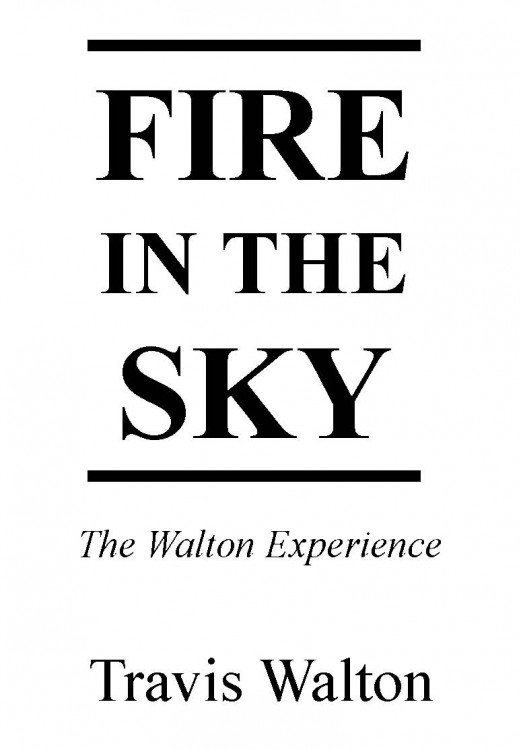
Published by Marlowe & Company
632 Broadway, Seventh Floor
New York, New York 10012
Sons and Daughters Art Neville/Arthel Neville/Ian Neville/Lorraine Neville/Ron Cuccia/Malcolm Burn 1990 Neville Music & Arthelian Music (BMI) & Neeha Music & Chief Jolly Music (ASCAP) All rights administered by Irving Music, Inc. (BMI) on behalf of Neville music for the world/Almo Music Corp. (ASCAP) administered for Chief Jolly Music for the world.
Photographs of D.B. Sweeney and Robert Patrick courtesy of Paramount Pictures 1993 Paramount Pictures. All rights reserved.
All other photographs and illustrations copyright 1978, 1996 by Mike Rogers. All rights reserved.
Fire in the Sky written by Pete Kozak 1996. All rights reserved.
Copyright 1979, 1996 by Travis Walton
ISBN 1-56924-840-0
Library of Congress Card Catalog number: 96-075582
Printed in the United States of America
Foreword
by Tracy Torme, Screenwriter/Producer,Fire in the Sky
It was November 5, 1985, and the significance of the date hadnt escaped me. As the jetliner descended toward the Valley of the Sun, my mind reeled back, ten years to the day.
Id been sitting in the library at Beverly Hills High (in the days before its zip code became a household word), listening to the radio on headphones, pretending to study. A five-minute newsbreak interrupted the rock and roll, and the last item caught my distracted attention....
An Arizona man named Travis Walton was missingand his coworkers came up with the craziest excuse for his disappearance: He had been blasted by a ray of light and taken away by a flying saucer, they said. It was clear from the tone of the report that no one believed them. Murder was already being mentioned. The local newsmen threw in the standard line about little green men... then the Stones returned with a song about tumbling dice. But I wasnt listening. I was thinking about Travis Walton.
Now, ten years later, I was touching down in Phoenix, on my way to Snowflake, Arizona, and a face-to-face meeting with Travis. As I hurried to catch a commuter flight, I ran into the pilot, who informed me that his plane was grounded. There was a storm over the White Mountains, and I was out of luck. I offered to double the money. No go.
Storm? What storm? I looked up at the cool blue sky in frustration. My time was limited; I had to be back in L.A. in three days, and I was determined to reach Snowflake.
So I rented a cara very special car according to Hertza brand-new four-wheel-drive Peugeotand I was off to Snowflake. For two hours I headed east across the desert, enjoying the sunshine and scenery in a way only a city boy can.
And then it started to snowin a big way.
As ice, sleet, and snow pelted my little French car I made an interesting discovery: The windshield wipers didnt work. I drove on in exasperation, sticking my head out the window and trying my best to follow the highway, then glancing back through the mist for the racing flatbed that was sure to run me down at any moment.
Near the old mining town of Superior, I pulled off the road and waited for the storm to abate. I thought of Travis and the first time wed spoken, a few days earlier. Id gotten his number from Snowflake Information; I later discovered it had been unlisted for ten yearshed just put it back in the phone book a day or two before I called. I took that as a good omen. The call had been spurred by a discussion Id had with producer Robert Strauss a week previous. The Walton case was so interesting, so spectacular, why hadnt anyone made a movie about it? In my preliminary talks with Travis, the answer became clear.
The Travis Walton I knew only by voice seemed extremely suspicious of anyone from Hollywood. In fact, he seemed suspicious of anyone, period. So I was journeying to Snowflake for two major reasons: to convince him that I was sincere in my pledge to make a him that told his story truthfully, and to see for myself if the case was a hoax. In my mind, the latter wasnt a deal breaker. If the Walton incident was an elaborate ruse, I still felt that made for a great story that could be translated to the screen.
The storm never ended; I arrived in Snowflake three hours later, half amazed still to be in one piece. Over the course of the next few days and several more trips to the area, I interviewed Travis and Dana Walton, Mike Rogers, Kenny Paterson, John Goulette, Allen Dalis, Glen Flake, Marlin Gillespie, etc. I spoke with believers and disbelievers, well-wishers and scornmongers. In the end there was only one conclusion I could possibly reach.
The woodsmen had been telling the truth.
Something built by nonhuman hands really did appear on the mountain that night. A piece of unreality had become all too real and had changed seven young mens lives forever. I was amazed by the skeptics lack of a reasonable alternative, and I was impressed by the amount of suffering the incident had caused the woodsmen.
Six and a half long years later, Fire in the Sky went into production. Why did it take so long? In the film business, things that should take a week take a month. And every time we said, Could we please have twenty million dollars to make this movie?... someone with twenty million dollars said no.
It was my sad duty to report to Travis all the roadblocks and false alarms we experienced during those years. I encouraged him to maintain the hope and expectation that our film would eventually be made. Travis hung in there with us until we finally hit pay dirt. As the film was produced, shot, and edited, I could sense his growing excitement, as well as the satisfaction he felt at finally having the opportunity to have a large, nationwide audience vicariously relive his experience. I know this book will enlighten and amaze the reader, just as the story of the Walton Seven first captivated me, half my lifetime ago.
Travis Walton has changed since the time I first met him. His qualities of quiet truthfulness and deep introspective thinking are still the same, but the chip on his shoulder has evaporated. He holds his head high now, confronts his critics directly and readily accepts the fact that there are some who will always disbelieve. He is a family man of quality, at peace with himself and his experience. Im proud to call him my friend.
Preface
Context
To perceive is to suffer.
Aristotle
Next page
